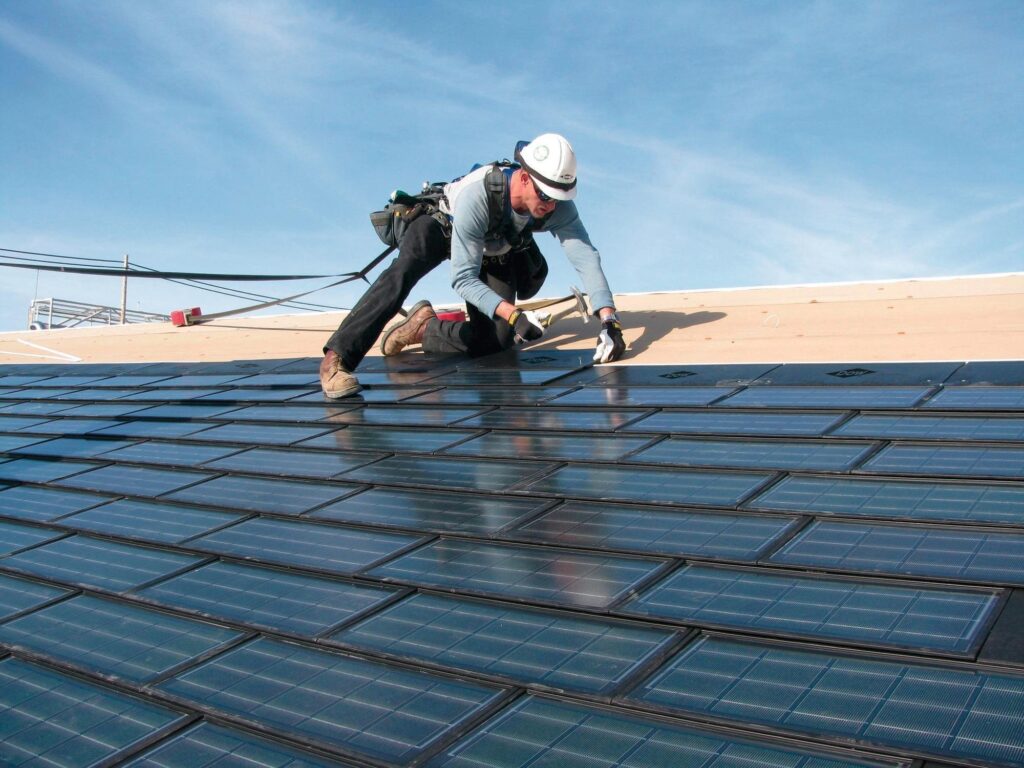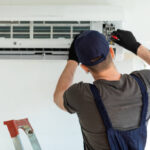When it comes to managing a commercial building, one of the most important aspects to consider is the roof. A strong, durable roof protects your investment, your employees, and your customers. Whether you’re constructing a new building or replacing an old roof, commercial roofing installation is a critical task that requires professional attention. In this ultimate guide, we’ll explore what you need to know about commercial roofing installation services, including the types of roofing systems, the installation process, and how to choose the right roofing contractor.
1. Understanding Commercial Roofing Systems
Commercial roofs come in various types, and choosing the right one depends on several factors, including the climate, the type of building, and your budget. Below are some of the most common roofing systems used in commercial properties:
Flat Roofing
Flat roofs are the most common for commercial buildings, especially in urban areas. They are easy to maintain and offer the potential for additional usable space, such as a rooftop garden or HVAC units. The most popular types of flat roofing materials include:
- TPO (Thermoplastic Olefin): A popular choice for flat roofs, TPO is energy-efficient, durable, and resistant to UV rays and chemicals.
- EPDM (Ethylene Propylene Diene Monomer): This rubber roofing is known for its long lifespan and weather resistance, making it a top choice for flat roof installations.
- Modified Bitumen: A blend of asphalt and rubber, modified bitumen roofing is durable and resistant to extreme temperatures.
Pitched Roofing
While less common for commercial buildings, pitched roofs are still used for certain structures, like warehouses or retail spaces. They’re ideal for areas that experience a lot of rainfall or snow. Pitched roofing systems are made from materials like:
- Asphalt Shingles: A cost-effective and popular roofing material for sloped roofs, providing reliable protection against the elements.
- Metal Roofing: Known for its durability, metal roofing offers long-term protection and energy efficiency. It is often used in areas where strong winds or heavy rainfall are common.
Green Roofing
Green roofs, also known as living roofs, are becoming increasingly popular due to their environmental benefits. They involve planting vegetation on the roof, which provides insulation, reduces stormwater runoff, and improves the building’s energy efficiency.
2. The Commercial Roofing Installation Process
The installation of a commercial roof is a complex process that requires careful planning and attention to detail. Here’s a breakdown of the typical steps involved:
Step 1: Inspection and Assessment
Before installation begins, a roofing professional will perform a thorough inspection of the existing roof structure. This involves assessing the condition of the current roof, determining whether repairs are needed, and evaluating the building’s structure to ensure it can support the new roof system. The contractor will also assess local building codes and climate conditions to recommend the best roofing system.
Step 2: Roof Removal (If Necessary)
If you’re replacing an existing roof, the old materials must be removed before installation can begin. This could include tearing off old shingles, membranes, or metal panels. The roof deck is then inspected for any damage, and any necessary repairs are made before the new roofing material is applied.
Step 3: Installation of the New Roofing System
The next step involves installing the chosen roofing system. For flat roofs, this typically involves laying down the underlayment, followed by the roofing material (TPO, EPDM, or modified bitumen). For pitched roofs, it involves laying the shingles or metal panels, along with any necessary flashing and underlayment to protect against leaks.
Step 4: Flashing and Sealing
Flashing is a crucial component of commercial roofing installation. It is installed around roof features such as chimneys, vents, and skylights to prevent water infiltration. Proper sealing of seams and joints is also essential to avoid leaks.
Step 5: Inspection and Quality Control
Once the roof is installed, the contractor will conduct a final inspection to ensure everything is up to code and functioning properly. This includes checking for any gaps, ensuring proper drainage, and verifying that the roof meets local building codes.
3. Factors to Consider When Choosing a Roofing Contractor
The quality of your commercial roof depends heavily on the contractor you choose. Here are some factors to consider when selecting a roofing company:
Experience and Reputation
Look for a roofing company with years of experience in commercial roofing. A contractor who specializes in commercial properties will be familiar with the unique challenges and requirements of these types of roofs. Additionally, check reviews, ask for references, and research the company’s reputation in the industry.
Licensing and Insurance
Ensure that the roofing contractor is licensed to work in your area and carries the necessary insurance. This includes liability insurance to protect you in case of accidents or damage during installation. Working with an insured contractor gives you peace of mind that you won’t be held responsible for any unforeseen issues.
Warranty and Guarantees
A reputable contractor should offer a warranty on both the materials and the workmanship. The length of the warranty will vary depending on the roofing system and the company, but it’s essential to understand the coverage and limitations. A strong warranty provides assurance that the roof will perform as expected.
Cost Estimates
Get multiple estimates from different roofing companies to compare prices. However, be cautious of unusually low bids, as they may indicate subpar materials or shortcuts during installation. Make sure that the cost includes all aspects of the project, from materials to labor, and that there are no hidden fees.
4. Maintaining Your Commercial Roof
Once your commercial roof is installed, regular maintenance is essential to ensure its longevity. Here are some tips for maintaining your commercial roof:
- Regular Inspections: Have your roof inspected at least once or twice a year to identify any potential issues early.
- Clean Gutters and Drains: Clogged gutters can cause water to pool on the roof, leading to leaks and structural damage. Ensure that gutters and downspouts are clear of debris.
- Repair Damage Promptly: Address any signs of wear and tear, such as missing shingles or leaks, as soon as possible to prevent further damage.
- Trim Overhanging Trees: Trees near your roof can drop leaves and branches that can damage the roofing material over time.
Conclusion
Commercial roofing installation is an essential aspect of maintaining a safe, efficient, and durable building. By understanding the different types of roofing systems, the installation process, and how to choose the right contractor, you can ensure that your commercial property is well-protected for years to come. Whether you’re building a new structure or replacing an aging roof, investing in high-quality roofing and professional installation services will provide long-term value and peace of mind.


